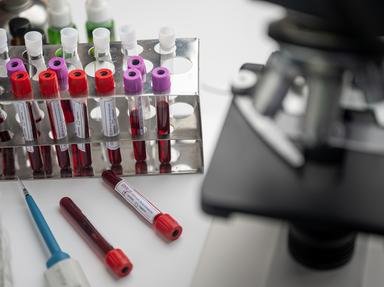Quiz Answer Key and Fun Facts
1. What we usually refer to as our "fat" is sometimes referred to as "white fat". It protects our organs and may provide chemical energy (in the form of ATP). But what function does "brown fat" perform?
2. Cholesterol is one of the most commonly talked about lipids. Which of the following best describes cholesterol?
3. Lipids must be transported in the blood. But lipids are non-polar, and plasma is a polar solvent. How are lipids usually transported in the blood?
4. One of the most fascinating proteins in the body is one called ApoE. It has a host of diverse functions which may be important to advances in human medicine. One such function is the clearance of "bad cholesterol" from the blood. What disorder is common in people with mutated ApoE genes?
5. The body can safely store lipids in adipocytes, but high amounts of lipids in the blood may lead to this lipid being deposited in inappropriate and unsafe places. What term is used to refer to these misplaced lipids?
6. In order to form the various lipids which keep us alive, we must first digest the lipids we take in in our diet. What is the name for the group of enzymes responsible for this?
7. Cell membranes (as well as the membranes which enclose organelles) are made of phospholipids, which can exist in a number of different varieties. The distribution of different phospholipids helps to determine the character of the membrane. What rather literal name is given to the group of enzymes responsible for this distribution?
8. This group of lipids were so mysterious when they were discovered that they were named after an enigmatic creature from Egyptian mythology. These lipids are similar to glycerophospholipids, but they contain no glycerol and can have a myriad of groups attached to them. What are they called?
9. Waxes play several biological roles. They consist of two main components. One is a long chain fatty acid. What is the other?
10. In cells, a process known as beta-oxidation is used to obtain energy using fatty acids as a fuel source. This usually occurs in the mitochondrial matrix, but in which other organelle can it occur?
Source: Author
doublemm
This quiz was reviewed by FunTrivia editor
CellarDoor before going online.
Any errors found in FunTrivia content are routinely corrected through our feedback system.


